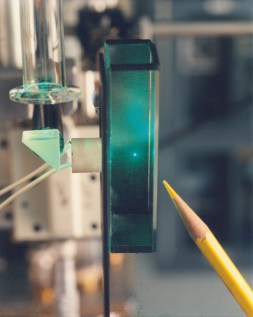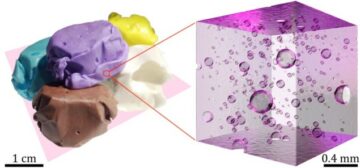Strong, light and with amazing electronic properties, graphene has always been touted as the “wonder material”. But two decades after it was first isolated, James McKenzie believes the graphene is finally delivering on its promise
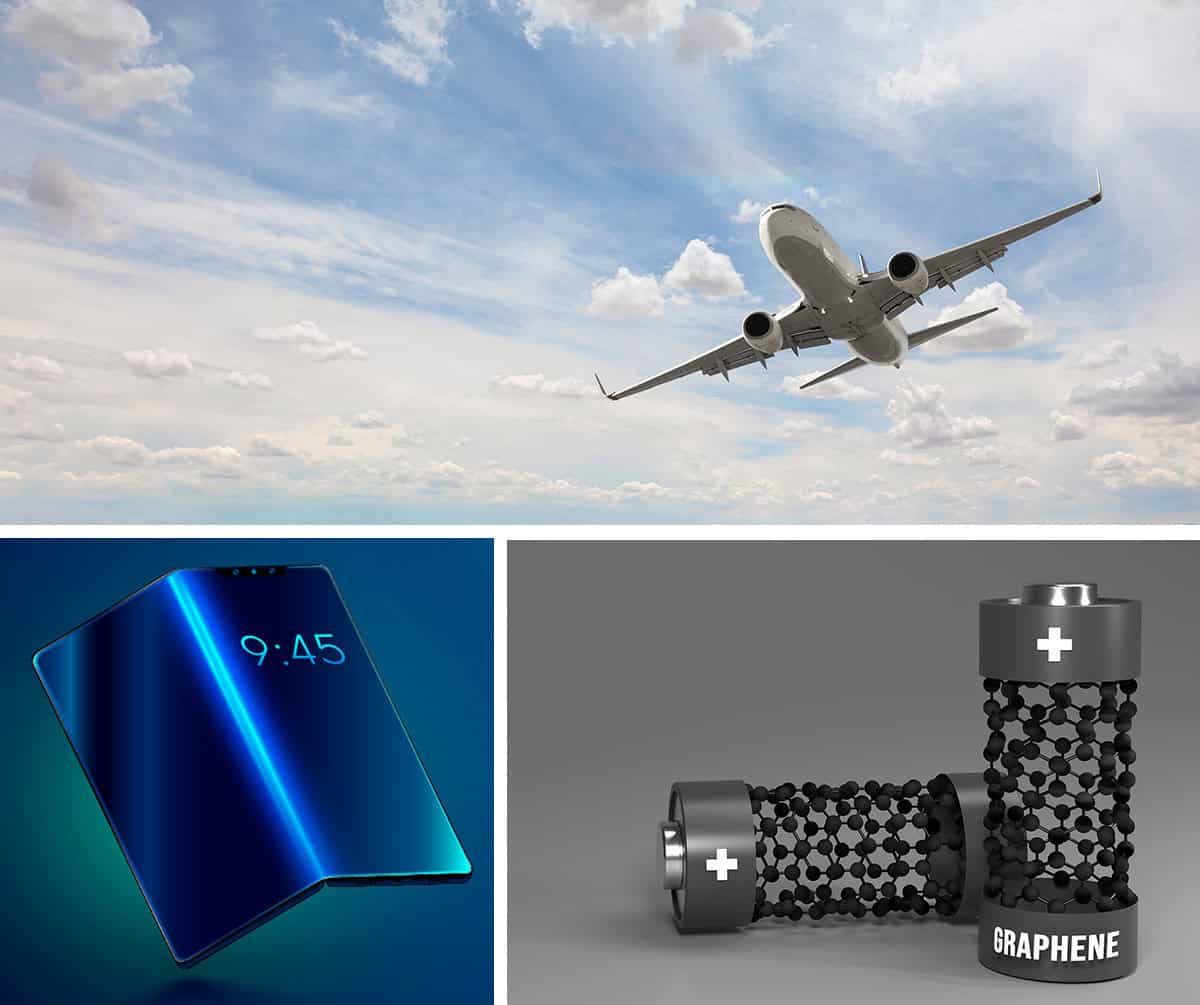
Unless you’re directly involved in graphene research and development, you might only have a vague notion of what this supposed “wonder material” is all about. Yes, you’ll remember the early excitement when Andre Geim and Konstantin Novoselov first isolated graphene in 2004 and how, six years later, they won the Nobel Prize for Physics. But you could be forgiven for thinking all the noise about graphene was nothing more than media hype.
However, I recently came across a roadmap in the IOP Publishing journal 2D Materials (11 022002), which declared that the market for graphene applications could be worth $5.5bn by 2027. Now, from my experience, reports on markets for materials are seldom useful. If you tried to size the market for, say, silicon-related materials, you’re in danger of lumping in everything from optical fibres, electronics and solar cells to glass, building sand (silicon dioxide) and sunglasses too.
But this new report on graphene is excellent, with more than 200 detailed references. In fact, I think its aggregated estimation of the market size of graphene, which is based on 130 separate analyses, is probably about right. Sure, it’s not like you can buy graphene products on Amazon, but the applications are far more subtle and pervasive than you might think. Indeed, I’d say they follow the story line of the original hype relatively faithfully.
Written by Henning Döscher and colleagues at the Fraunhofer Institute for Systems and Innovation Research in Karlsruhe, Germany, the new report emerged from the EU’s huge €1bn Graphene Flagship project. It was launched in 2013 and tackled everything from examining the health impacts of graphene (nothing of major concern just in case you were worried) to developing applications and teasing out new markets for graphene.
From material to market
I first got a glimpse of graphene’s potential back in 2011 when I was running an LED lighting business and was asked to attend a workshop on the impact of graphene in lighting. At the time, LEDs put more heat out the back than they emitted light out the front. So it seemed reasonable to ask if graphene – a material with near diamond-like thermal conductivity that was potentially cheap to make – could be useful.
Sadly, it wasn’t to be a killer app for graphene. The influential LED efficiency technology roadmap, published in 2010 by the US Department of Energy, had predicted that by about 2015 companies would be routinely making light bulbs from plastic that consumed less than 10 W of power. But by 2020 LED bulbs had got even better, requiring just 5 W to produce the same amount of light while emitting barely 2 W of heat. Thermal management, in other words, wasn’t really a problem for lighting any more.
What that 2011 workshop did do, though, was give me a glimpse of graphene’s amazing properties. As you probably know, graphene is a single layer of carbon atoms arranged in a strongly bonded hexagonal honeycomb lattice. It’s very thin too – just 0.345 nm deep. These properties are what enable graphene to break so many records in terms of strength, electrical conductivity and heat transfer.
Graphene and hype have gone hand in hand ever since Geim and Novoselov originally created the material at the University of Manchester using the famous “Scotch tape method” – a simple and cheap exfoliation process that involved using sticky tape to pull carbon layers from the top of a graphite block. Since then, other, more sophisticated and more expensive methods have been developed to make larger and/or more uniform graphene materials for different applications.
1 Going for growth
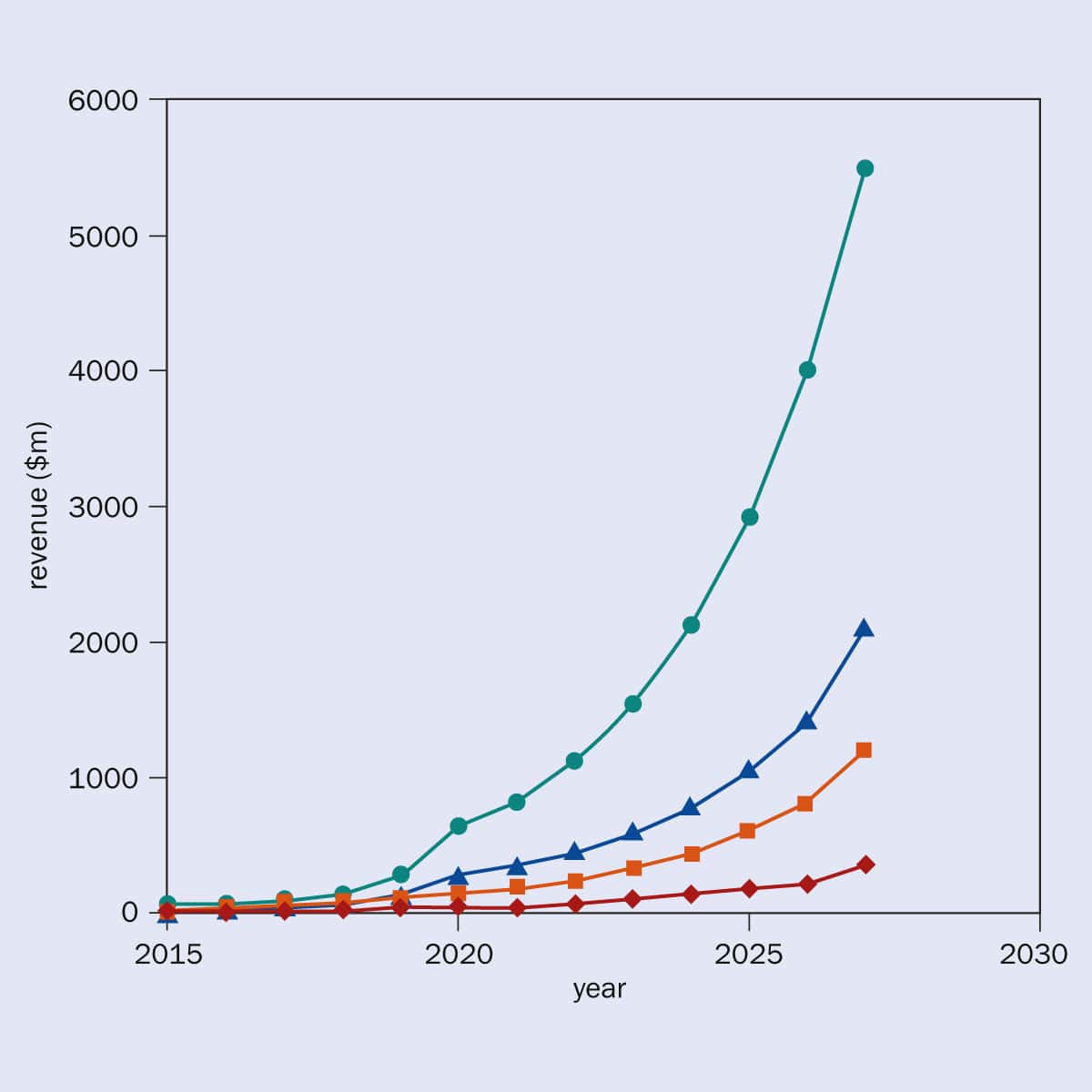
As such a great conductor and being 200 times stronger than steel, it’s obvious why there was so much excitement about graphene. But for anyone familiar with the “Gartner hype cycle”, it’s no surprise that graphene’s early promise was soon followed by a “trough of disillusionment” as people lost interest and enthusiasm. However, as the Gartner cycle so wonderfully predicts of any new tech, we’re now reaching the “plateau of productivity”, where real applications and products are starting to emerge.
Market segments
Over the last 20 years, countless scientists and engineers have been developing applications of graphene, filing thousands of patents and building hundreds of businesses based on it. The new 2D Materials report helpfully categorizes the many applications into three sub-markets. These are: graphene electronics (exploiting its unique electrical properties); graphene composites (focusing on its hardness and strength); and graphene batteries (where it could potentially outperform every other material).
The report estimates that the graphene market was worth about $100m in 2022 and is rising at a compound annual growth rate of 20–30%. The biggest potential applications, the authors reckon, lie in graphene electronics, where the market could be worth up to $1bn in the next few years. Growth rates of up to 40% are predicted – and potentially even higher over the longer term.
According to researchers at the UK’s National Graphene Institute in Manchester, graphene could lead to a new generation of electronic components, including faster transistors, more powerful semiconductors and even “bendable” phones. But one area where graphene will soon be commercialized is optoelectronics – and specifically touchscreens, liquid crystal displays (LCDs) and organic light emitting diodes (OLEDs).
2 Power users
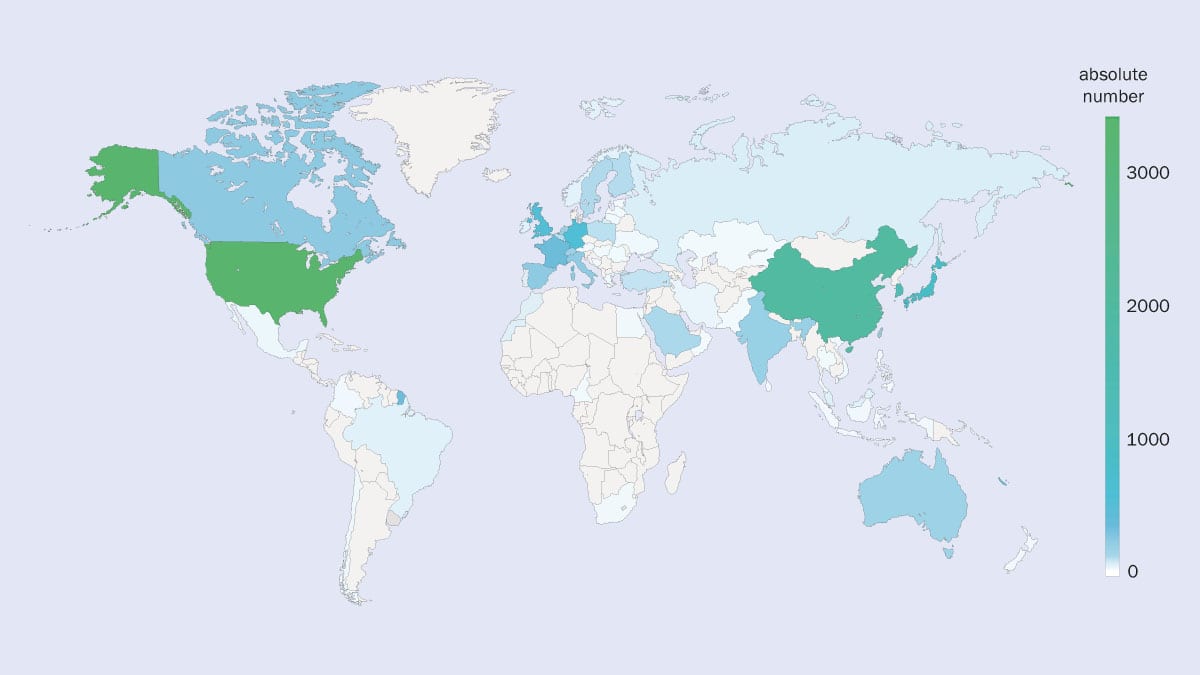
That’s because graphene is an almost completely transparent and highly conducting and so could replace indium tin oxide (ITO), which is widely used as a coating in smartphones and other touch-screen displays. Indeed, large graphene sheets deposited on substrates such as silicon dioxide have such a high tensile strength and are so flexible that they can achieve the required 5–10 mm for rollable e-paper – meaning it’s almost inevitable that graphene will soon become used in these applications.
Graphene is also a semiconductor, which in 2008 led researchers at Manchester to make the world’s smallest transistor – just one atom thick and 10 atoms wide. But a team in China, led by He Tian and Tian-Ling Ren at Tsinghua University, has recently bettered this making a viable graphene transistor gate about 0.34 nm long – roughly the size of a single carbon atom (Nature 603 259). Over the next two decades, devices such as these could help the electronics industry to maintain Moore’s law – the two-yearly doubling in chip density that has been increasingly hard to sustain.
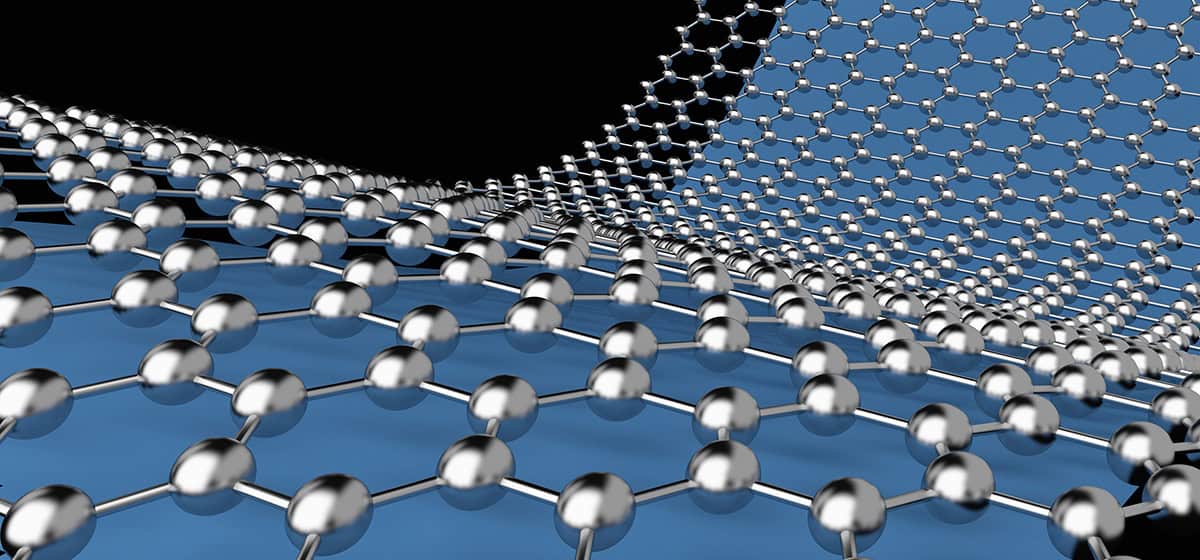
As far as sensors are concerned, graphene is really useful because it is just one atomic layer thick. Every atom is therefore exposed to its environment and is highly attuned to changes in surroundings. For chemical sensors, the goal is to be able to detect just one molecule. One firm making headway here is the University of Cambridge spin-out Paragraf, which claims to be the first company in the world to mass produce graphene electronics using standard semiconductor processes. It is initially focusing on biosensors and magnetic-field sensors although Paragraf has much bigger plans in store if its website is to be believed.
The company’s magnetic-field sensors, which measure the voltages generated by tiny magnetic fields via the Hall effect, can work all the way from cryogenic temperature up to 350 K with fields from 10 µT up to 30 T. That’s far better performance than conventional Hall-effect sensors, which use other semiconductors such as gallium arsenide.
3 Big money
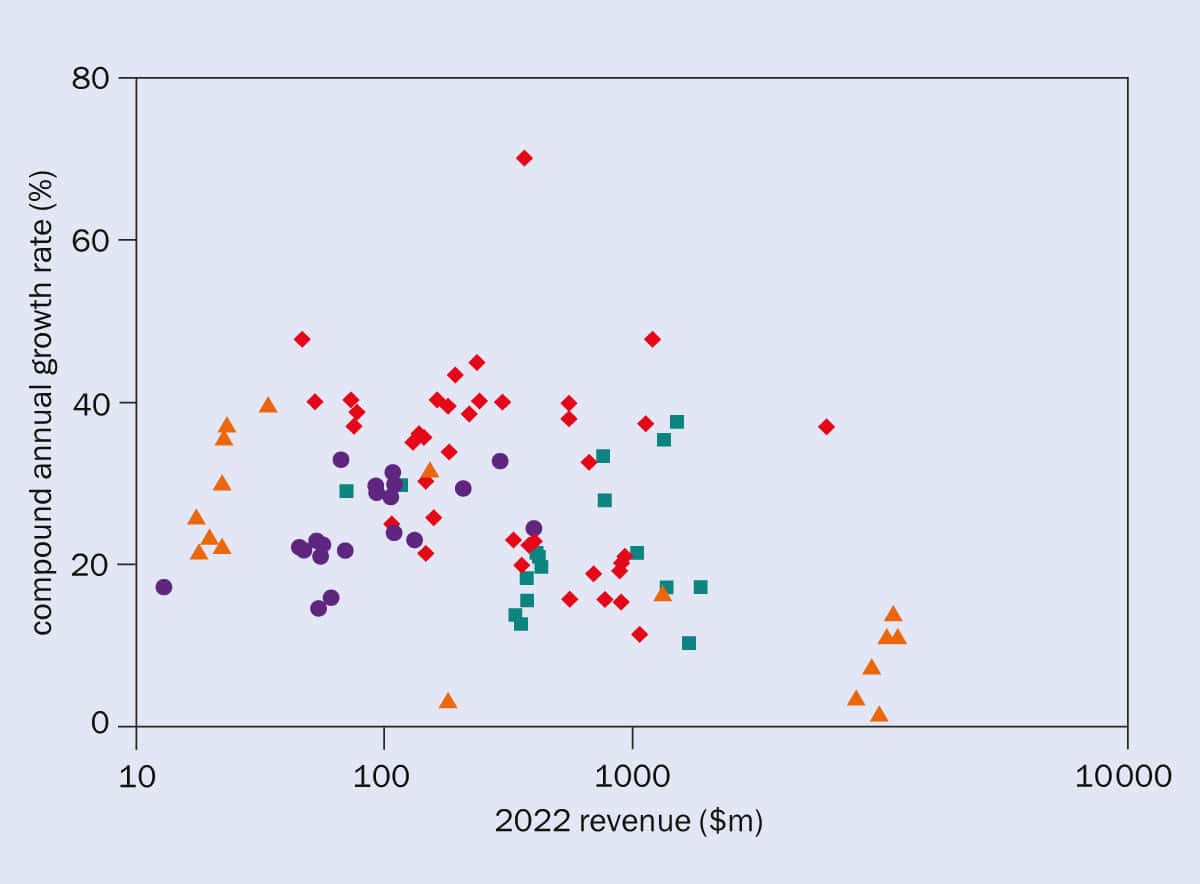
There has even been talk of using graphene in quantum computers. One promising development in that regard is bilayer graphene (BLG), which could be used to make long-lived, electrically controllable quantum bits (qubits) thanks to what are known as “valley states”. Researchers at ETH Zurich have recently made exciting progress in this area that could potentially deliver scaleable qubits although it’s still early days (Nature Phys. 20 428).
As for graphene’s use as a composite, it’s all down to the material’s unique combination of strength, stiffness and lightness. It has an ultimate tensile strength of 130 GPa, which is roughly 300 times that of the 0.4 GPa for “A36” structural steel and 0.4 GPa for the Kevlar found in bullet-proof vests. Graphene is also a thousand times lighter than paper, with one square metre of graphene weighing just 0.77 mg.
Able to block radio waves and 10 times better than steel or Kevlar at withstanding an impact, graphene is ideal for 21st-century body armour. It’s also being eyed up by aerospace engineers, who have long been trying to make aircraft lighter and stronger by incorporating carbon fibre into the steel frames of the plane. But as it’s even stronger and lighter, graphene could be used in composites that replace steel entirely, improving the fuel efficiency of aircraft.
As for batteries – the third application mentioned in the new report – the hope is that electrodes made from graphene could dramatically improve charging speeds. But several companies, including the electronics giants Samsung and Huawei, are going further and developing whole batteries chemistries based on graphene and other materials to exploit its unique properties.

It’s all about the money. Why seemingly great technological solutions can sometimes fail
These firms are promising batteries that could be charged faster and store more energy per unit volume than existing lithium-ion batteries. That could be great news for electric vehicles, which is the largest potential market in terms of volume. But what ultimately dictates whether these applications succeed will be the simple “cost per kilogramme” – and much more work will be have to be done before graphene batteries reach the market. It will happen, but probably not before the 2030s
A nearer term application of graphene batteries is expected to be in mobile devices, with Samsung and Huawei having already announced developments in this area. The demand is sure to be there: in fact, I am sure mobile-phone will want to pay extra for a device that has higher energy density, lasts five times as long, and can be charged up to 60 times faster.
Looking ahead
Graphene has huge potential but the 2D Materials roadmap is a reminder that it’s never easy or quick for new technologies to displace incumbents. Products based on graphene will have to be much better and more cost effective than what’s already on the market if they are to win out or even stand a chance of success. I cannot stress this part enough: for graphene to work, it’s all a question of economics.
Vague claims about graphene’s merits won’t cut the mustard. Graphene has to provide concrete practical applications that will benefit consumers. If graphene is to fulfil its promise, it will simply have to beat incumbent technology hands-down on price and specific performance. But given the countless applications, some – I am sure – will win out. Like all successful new technology, graphene will one day will be a pivotal part of our lives, without anyone noticing it is even there.
- SEO Powered Content & PR Distribution. Get Amplified Today.
- PlatoData.Network Vertical Generative Ai. Empower Yourself. Access Here.
- PlatoAiStream. Web3 Intelligence. Knowledge Amplified. Access Here.
- PlatoESG. Carbon, CleanTech, Energy, Environment, Solar, Waste Management. Access Here.
- PlatoHealth. Biotech and Clinical Trials Intelligence. Access Here.
- Source: https://physicsworld.com/a/why-graphene-is-finally-coming-good-as-the-wonder-material/
- :has
- :is
- :not
- :where
- $1bn
- $UP
- 10
- 130
- 135
- 20
- 20 years
- 200
- 2000
- 2008
- 2010
- 2011
- 2013
- 2015
- 2020
- 2021
- 2022
- 2D
- 30
- 300
- 345
- 350
- 4
- 60
- 77
- 90
- a
- Able
- About
- ABSTRACT
- AC
- Achieve
- across
- Aerospace
- After
- aggregated
- aircraft
- All
- almost
- already
- also
- Although
- always
- am
- amazing
- Amazon
- amount
- an
- analyses
- and
- announced
- annual
- any
- anyone
- app
- Application
- applications
- ARE
- AREA
- arranged
- AS
- ask
- asked
- At
- atom
- attend
- authors
- average
- back
- based
- batteries
- BE
- beat
- because
- become
- been
- before
- being
- believed
- believes
- benefit
- Better
- between
- Big
- bigger
- Biggest
- bits
- Block
- body
- bonded
- Break
- Building
- bulbs
- business
- businesses
- but
- buy
- by
- cambridge
- came
- CAN
- cannot
- carbon
- case
- Cells
- Chance
- Changes
- charged
- charging
- cheap
- chemical
- China
- chip
- claims
- click
- Close
- colleagues
- combination
- coming
- commercialized
- Companies
- company
- Company’s
- completely
- components
- Compound
- computers
- Concern
- concerned
- concrete
- conducting
- conductivity
- conductor
- consumed
- Consumers
- conventional
- Cost
- could
- countless
- countless applications
- country
- courtesy
- created
- cryogenic
- Crystal
- curves
- Cut
- cycle
- DANGER
- Dates
- day
- Days
- decades
- declared
- deep
- deliver
- delivering
- Demand
- density
- Department
- Department of Energy
- deposited
- detailed
- detect
- developed
- developing
- Development
- developments
- device
- Devices
- dictates
- DID
- different
- directly
- displays
- do
- dollars
- done
- doubling
- down
- dramatically
- Early
- easy
- Economics
- Effective
- efficiency
- Electric
- electric vehicles
- Electronic
- Electronics
- emerge
- emerged
- enable
- energy
- energy density
- Engineers
- enough
- enthusiasm
- entirely
- Environment
- estimated
- estimates
- ETH
- ETH Zurich
- Even
- EVER
- Every
- everything
- Examining
- excellent
- Excitement
- exciting
- existing
- expected
- expensive
- experience
- Exploit
- exploiting
- exposed
- extra
- fact
- familiar
- famous
- far
- faster
- few
- Fields
- Filing
- Finally
- Firm
- firms
- First
- five
- flexible
- focusing
- follow
- followed
- For
- found
- from
- front
- Fuel
- fuel efficiency
- further
- Gartner
- gate
- generated
- generation
- Germany
- giants
- Give
- given
- gives
- glass
- Glimpse
- Global
- global market
- goal
- going
- gone
- good
- got
- GPA
- graph
- Graphene
- great
- Growth
- had
- Hall
- hand
- happen
- Hard
- hardness
- Have
- having
- he
- Health
- help
- here
- High
- higher
- highly
- hold
- hope
- How
- However
- HTML
- HTTPS
- Huawei
- huge
- Hundreds
- Hype
- i
- ideal
- IEEE
- if
- image
- Impact
- Impacts
- improve
- improving
- in
- In other
- includes
- Including
- incorporating
- increasingly
- Incumbent
- indeed
- individual
- industry
- inevitable
- Influential
- information
- initially
- Innovation
- Institute
- interest
- into
- Inventors
- involved
- isolated
- issue
- IT
- ITS
- journal
- jpg
- just
- just one
- keyword
- killer
- killer app
- Know
- known
- large
- larger
- largest
- Last
- later
- launched
- layer
- layers
- lead
- Led
- less
- lie
- light
- lighter
- Lighting
- like
- likely
- Line
- Liquid
- Lives
- Long
- longer
- lost
- made
- Main
- maintain
- major
- make
- Making
- management
- manchester
- many
- map
- Market
- Markets
- Mass
- material
- materials
- max-width
- maximum
- me
- meaning
- measure
- measured
- Media
- mentioned
- merits
- methods
- might
- millions
- minimum
- Mobile
- mobile devices
- molecule
- money
- more
- much
- my
- myriad
- nationality
- Nature
- Near
- never
- New
- New Tech
- New technologies
- news
- next
- no
- nobel
- nobel prize
- Noise
- nothing
- Notion
- now
- obvious
- of
- on
- ONE
- only
- open
- optical
- or
- Orange
- organic
- original
- originally
- Other
- our
- out
- Outperform
- over
- overall
- Paper
- part
- patent
- Patents
- Pay
- People
- per
- performance
- phone
- phones
- Physics
- Physics World
- pivotal
- plane
- plans
- plastic
- plato
- Plato Data Intelligence
- PlatoData
- potential
- potentially
- power
- powerful
- Practical
- Practical Applications
- predicted
- prediction
- Predicts
- price
- priority
- prize
- probably
- Problem
- process
- processes
- produce
- Products
- Progress
- project
- promise
- promising
- properties
- provide
- published
- Publishing
- put
- Quantum
- quantum computers
- qubits
- question
- Quick
- Radio
- Rate
- Rates
- reach
- reaching
- real
- really
- reasonable
- recently
- records
- Red
- references
- regard
- relatively
- remember
- reminder
- ren
- replace
- report
- Reports
- required
- research
- research and development
- researchers
- revenue
- right
- rising
- roadmap
- roughly
- routinely
- running
- same
- Samsung
- SAND
- say
- scaleable
- scientists
- Search
- seemed
- seemingly
- seldom
- semiconductor
- Semiconductors
- sensors
- separate
- several
- sheets
- show
- showing
- shown
- Shows
- Silicon
- Simple
- simply
- since
- single
- SIX
- Size
- smallest
- smartphones
- So
- solar
- Solar cells
- Solutions
- some
- sometimes
- somewhere
- Soon
- sophisticated
- specific
- specifically
- speeds
- square
- stand
- standard
- Starting
- steel
- sticky
- Still
- store
- Story
- strength
- stress
- strong
- stronger
- strongly
- structural
- structure
- subtle
- succeed
- success
- successful
- such
- supposed
- sure
- surprise
- Systems
- T
- Talk
- tape
- TEAL
- team
- tech
- technological
- Technologies
- Technology
- term
- terms
- than
- thanks
- that
- The
- the information
- the world
- then
- There.
- therefore
- thermal
- These
- they
- thin
- Think
- Thinking
- Third
- this
- though?
- thousand
- thousands
- three
- thumbnail
- time
- times
- tiny
- Title
- to
- too
- took
- top
- Touchscreens
- touted
- transfer
- transparent
- tried
- true
- trying
- Tsinghua
- two
- ultimate
- Ultimately
- unique
- unit
- university
- university of cambridge
- us
- US Dollars
- use
- used
- useful
- users
- using
- Vehicles
- very
- viable
- volume
- W
- want
- was
- waves
- Way..
- Website
- weighing
- were
- What
- when
- whether
- which
- while
- WHO
- whole
- why
- wide
- widely
- Wikipedia
- will
- win
- with
- without
- words
- Work
- workshop
- world
- worried
- worth
- would
- years
- yes
- you
- zephyrnet
- Zurich




